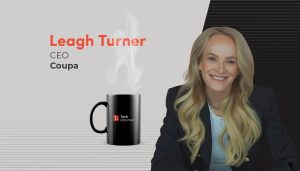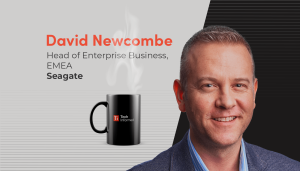

A coffee with…Tomas Kellner, Chief Storyteller, Bentley Systems
Earlier last year infrastructure software company Bentley Systems appointed Tomas Kellner in a new role to increase its profile and improve how the billion-dollar family-owned firm tells its story. Kellner – who has built up…
Earlier last year infrastructure software company Bentley Systems appointed Tomas Kellner in a new role to increase its profile and improve how the billion-dollar family-owned firm tells its story.
Kellner – who has built up storytelling hubs for Amazon and GE – has pledged to focus on telling the “untold story” of how Bentley Systems is using technologies such as machine learning, AI and digital twins to improve the world’s infrastructure.
The Czech-born executive, who came to the US on a Fulbright Scholarship to study journalism, has previously worked at business magazine Forbes during the dotcom boom and has also spent time working as a private investigator for firms undergoing merger and acquisition activities.
TI caught up with the keen runner in Vancouver last fall where Bentley – which celebrated its 40th birthday last year – held its Year in Infrastructure conference.
Why has Bentley hired a chief storyteller?
To help it tell its own stories and build up its own distribution channels, so that it can go directly to its audience. We did this at GE through its storytelling hub, GE Reports. Steve Clayton also pioneered this at Microsoft.
Story has been a primary vehicle ever since we’ve had language for conveying information and especially for tech companies which produce something that is not always tangible – something like software is basically invisible but it impacts a lot of people.
What stories do you want to tell at Bentley?
I want to tell stories that connect to some of the larger conversations that we’re having today around sustainability, the energy transition and economic development.
There’s going to be nine billion people in the world and somehow everybody wants to be better off tomorrow than they were last year. One thing that can enable this is infrastructure.
But this trend runs counter to the other trend which is climate change. What Bentley is trying to do is find ways to achieve both these goals. You can have economic development but also you can do it sustainably. That’s one bucket of stories that connects to this conversation.
The other one is climate change – we are past the period of mitigation and carbon removal – it’s too late. We saw this recently in Florida and across Europe. We must adapt to it and live with it. This company is creating solutions, software, digital twins AI that are helping construction companies, engineering firms to design infrastructure that can withstand what is coming.
You studied engineering at university – does that make these stories easier to write about?
I studied material science at the Czech Technical University in Prague. So, at GE it was easy to write about physical stuff – I knew how a jet engine works and could explain it to a 16-year-old – which is probably to the level of where we want to tell these stories, so everyone can connect.
Bentley is interesting because the product is physical, tangible, the outcome is tangible – the road, the floodwall, the dam etc. but what is not tangible is the code. For me, that was the learning curve. What makes one piece of software different from another piece of software? So that’s where I’m doing the deeper dive. But I’m a curious person, so learning really drives me.
When were you bitten by the journalism bug?
While I was studying for my master’s I worked as a translator for an English-speaking newspaper called the Prague Post in the early nineties, right at the point where the country was starting to open. I started hanging out with US journalists who were flocking to Prague around this time. I sat in on interviews and helped with writing stories and I’d sometimes think ‘I could write that better, that is what they said but that’s not the story’ I caught the bug after that and realised that I wanted to be a journalist.
What made you pivot from reporting to working as a private investigator?
Like I said, I’m a curious person! I worked at Forbes for eight years, around the time of the dotcom boom, I met Jeff Bezos when Amazon was young (I remember his loud laugh!) and had lunch with the late British tech magnate Mike Lynch where we talked about Bayesian algorithms. But I really wanted to find out how deals were done and mergers and acquisitions – they keep these things away from you as a writer, these things tend to happen with lawyers in backrooms.
So, I worked for [risk and financial advisory firm] Kroll for six years. I travelled around the world doing research. You write an investigative story as a journalist would, but the story goes to the board or CEO. You have an audience of six, no one else reads it or is allowed to read it. Then it disappears somewhere. After a while I missed writing, and an opportunity to join GE opened in 2011.
Tell us about GE’s storytelling platform…
GE was visionary in many ways. It started telling stories in 1921 through a magazine. The company suffered during the financial crisis (2008) so CMO Beth Comstock and head of comms Gary Sheffer decided to revive its storytelling operation by launching GE Reports, which was focussed on getting GE stories out directly to the public at a time when reporters weren’t listening.
By the time I joined, they were looking at the next step. They use it as a comms tool to tell the positive stories but also to address crises. For instance, the Fukushima nuclear power disaster involved nuclear reactors that were built by GE in the 1960s.
Gary set up a ‘war room’ where they looked at old blueprints of what the reactors looked like and what was happening inside, and they were publishing it in GE reports so it became a resource for the public and for the media.
Is it true that Slaughterhouse-Five author Kurt Vonnegut worked as a storyteller for GE?
Before Piano Player came out he worked internally there as a journalist. I run a storytelling workshop for staff at Bentley and I used some of the advice he gave to executives at GE.
Vonnegut would use the example of the fairytale Cinderella to demonstrate how it’s the user, not the vendor, who is the protagonist in the story. The vendor is the fairy godmother and appears in the story as a catalyst. The vendor makes the outcome happen, but they are not the hero of the story and those are the best-told stories. They are not too self-promotional. That turns off people. Telling stories of how people are using the product – those are always the most effective stories. That’s what I’m always looking for.
Are you reading any good stories now?
A book called The Age of Living Machines by the former president of MIT Susan Hockfield – it’s about the convergence of biology and engineering.
The best book I read last year was American Ramble by my late friend Neil King Jr – Wall St Journal journalist who I first met at the Prague Post. He was diagnosed with thyroid cancer before COVID and his perspective on life shifted during remission.
After the 2020 elections, he walked from his home near the Capitol in DC to New York, meeting people from all walks of life and visiting historic sites, capturing the journey in his writing.
How do you switch off from work?
I go for a run every morning, quite early, to clear my head. I run long distances, and I try and do a marathon a year – I’m training for New York now. While I’ve been in Vancouver I’ve been running along False Creek, all the way to the other side of Stanley Park and back again. It was still dark when I set out this morning.
What is the last piece of tech you bought?
I’m a DJ and own an eclectic mix of vinyl. Every mix is a journey. I post them to Mixcloud under the name DJ Disco Czech. So, I bought myself a high-end digital recorder so that I can record my sets.
How do you take your coffee?
I drink it black and like to make my own. I grind my beans using a hand-powered Japanese grinder while watching TV. My wife laughs at me.
Read more here: Being a human leader in a digitalised world











